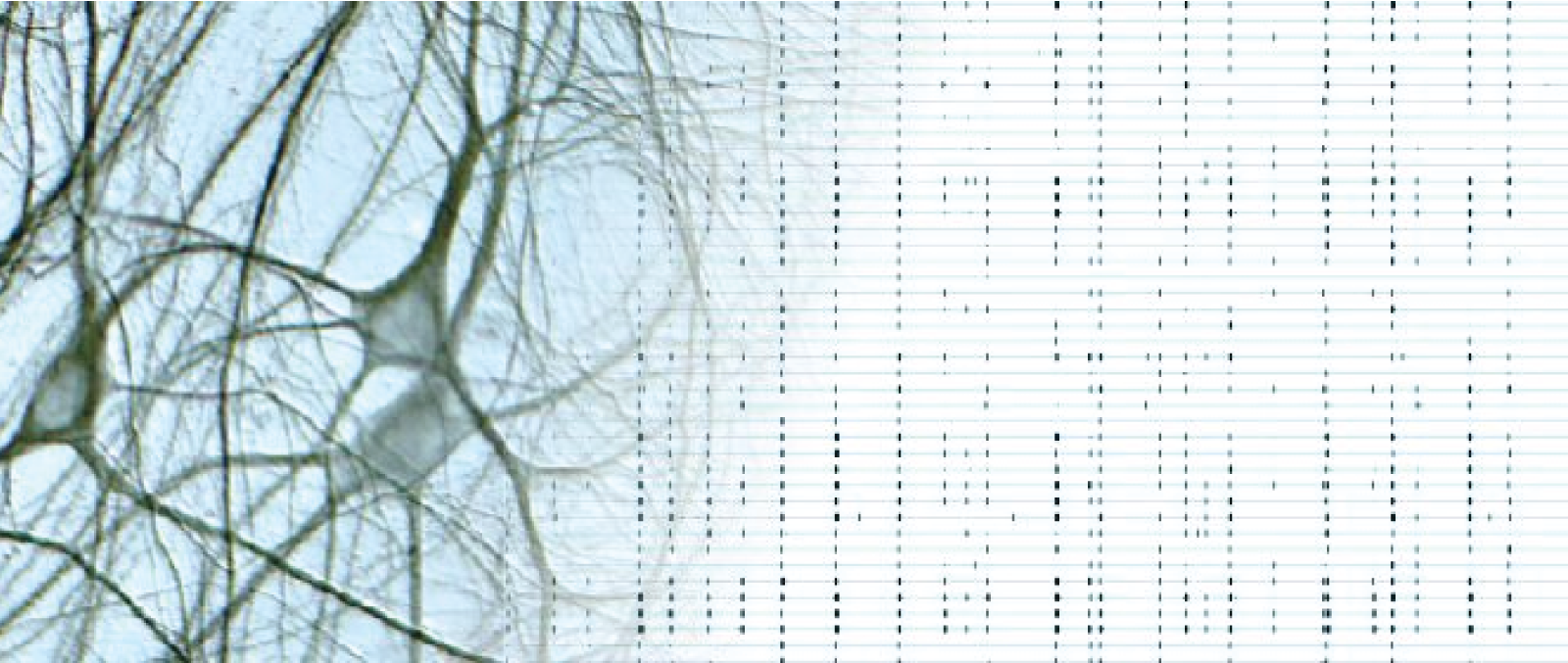

NeuroProof as a contract research organization is a global leader and preferred partner in the field of microelectrode array (MEA)-based phenotypic screening of primary cultures or hiPSC derived neuronal cultures. NeuroProof offers screening services and state-of-the-art mathematical expertise for the artificial intelligence based analysis of test agents on neuronal network activity.
Our services comprise the growing of neuronal cultures on MEA chips, medium-throughput screening of test agents, high-quality recording of spontaneous and compound-induced network activity, state-of-the-art mathematical analyses, and sophisticated pattern recognition methods. NeuroProof is your partner for developing new in vitro disease models with its functional phenotypic screening technology.
Functional and phenotypic screening has enormous importance in CNS drug discovery. NeuroProof offers in vitro disease models which incorporate the advantages of the phenotypic screening approach. In vitro CNS disease models contain complex neuronal cell cultures and are a real alternative to animal models in the early phases of drug development and compound profiling.
Phenotypic screening is the most successful screening approach in CNS drug discovery. All definitions of phenotypic screening refer to a physiological read-out as a phenotype of a complex cell system in vitro or in vivo. Phenotypes described by the electrophysiological activity of neuronal networks are ideal for phenotypic screening since they incorporate the natural physiological function of the brain.
MEA neurochips are a valuable tool to detect compound effects on neuronal maturation. By use of the MEA-neurochip technology we can directly monitor and characterize maturation of primary mouse or human iPSC-derived network activity in electrically active neuronal networks.
We have demonstrated, in many examples a receptor validation with standard pharmacology methods. For this, we pretreat cultures with a confirmed antagonist of a specific receptor and test a compound in an MEA experiment if this pretreatment neutralizes the compound effect.
In combination with our MEA analysis or as a stand-alone service we provide a complete report for toxicity profiling and safety screening including information about acute or chronic cell viability, and cytotoxicity.
Amyotrophic lateral sclerosis, ALS, also called Lou Gehrig's Disease, is a fatal, late-onset disease with severe diagnosis and no cure today. ALS targets motor neurons, causing their loss and eventually, the damage of motor function muscle movement. ALS occurs as bulbar or spinal ALS.
Unlock the potential of groundbreaking research with NeuroProof's innovative in vitro screening assay tailored for investigating the effects of novel antiepileptic compounds.
Loss of function of the SCN1A gene is the cause of Dravet syndrome, a catastrophic form of epilepsy.
The Potassium K+ channel blocker 4-aminopyridine (4-AP) induces epileptiform activity in in vitro preparations and is a potent convulsant in animals and man, Our 4-AP model is a versatile model for Epilepsy.
Amyotrophic lateral sclerosis, ALS, also called Lou Gehrig's Disease, is a fatal, late-onset disease with severe diagnosis and no cure today. ALS targets motor neurons, causing their loss and eventually, the damage of motor function muscle movement. ALS occurs as bulbar or spinal ALS.
Parkinson’s disease (PD) is caused by specific loss of dopaminergic neurons in the substantia nigra/midbrain and resulting lack of neuronal signals into the striatum which leads to motor and cognitive dysfunctions. Parkinson’s disease etiology is only partially understood. Disease models cover a wide range of approaches by using Parkinsonism provoking agents as MPP+, Rhotenon, or 6-OHDA or modeling this neurodegenerative disease with suspected disease-relevant proteins as alpha-synuclein filaments.
Alzheimer’s disease (AD) is caused by soluble beta amyloid, Abeta, aggregates/oligomers leading to neuro-degeneration and cognitive impairment which is one of the major hallmarks in AD.
Fragile X syndrome is the most common form of inherited cognitive disability. FXS patients also show symptoms that belong to the autism spectrum disorder symptoms. FXS is a neuro-developmental disease with about a prevalence of 1:5000 in males and 1:8000 in females.
Epilepsy, a prevalent neurological disorder, manifests as recurrent unprovoked seizures across various syndromes. Despite advancements in antiepileptic drugs, a significant proportion of patients remain unresponsive to current treatments, highlighting the need for novel therapeutic avenues,
Overactivation of glutamate receptors is a fundamental mechanism in neurodegenerative diseases it impairs cellular calcium homeostasis, activates nitric oxide synthesis and generation of free radicals causing programmed cell death.
April 2024: NeuroProof Systems GmbH Unveils New Assays for Epilepsy and Glutamate Excitotoxicity.
ALS models based on human iPSC-derived spinal motor neurons with disease-relevant mutations have the potential to help develop new urgently needed ALS therapies the more they are well-validated.
NeuroProof presents disease models with human neuronal cells
Sat PM: Functional Phenotypic Screening of Small Molecules in a human patient-derived cell model for Fragile X Syndrome
Wed AM: Functional Phenotypic Screening Models for ALS
Wed AM: Validation of Models for ALS with human iPSC Motor-derived Neurons